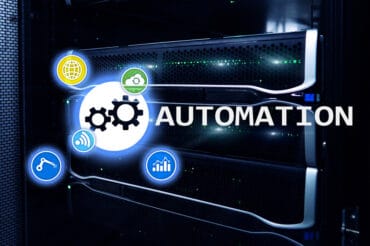
As more organizations turn to low-code, no-code programming, success cannot be fully realized without the accessibility provided by truly open APIs.
The deployment of new technologies, from artificial intelligence and virtual/augmented reality to digital twins and more, have all come under the deployment spotlight, with some of these emerging tech formats finding essential roles during pandemic-induced business changes. But at the same time, the software architecture that underpins these technology integrations is undergoing its own revolution. Software platforms built on low-code, no-code architecture are truly democratizing software development, removing much of the coding required to make changes to business software—opening the door for non-technical users to influence how their platforms work.
Complex and time-consuming customizations involving a network of programmers and developers may well become a thing of the past—and the research agrees. Recent reports show that 60 percent of CIOs have their eye on introducing governance for low-code, no-code tools with a view to boost both IT and business productivity. On the development side, experts predict that by 2024, 65 percent of app development functions will be built by low-code.
See also: No-Code Development Accelerates Business Transformation
Enter the API – strategic enabler
But new tech integration and low-code, no-code platforms can only truly be exploited with the help of one key enabler—application program interfaces (APIs). While there’s nothing new about APIs, this technology is coming into sharp focus as the need to get new applications to market increasingly quickly is coupled with a growing demand for ‘digital transformation’ from the C-suite.
APIs have reached new heights since the early days of component-based architecture, but today’s APIs are still inspired by Roy Fielding’s Representational State Transfer, or RESTful API. These make APIs easier to use and easier for other systems to discover what resources that API can provide to them.
Not all APIs are as open as first thought
Some vendors will talk about how they have open APIs, but these are often limited and designed for specific, pre-determined integration scenarios. The application, in the meantime, internally communicates – for example, between the user interface and the business logic – in a proprietary fashion that cannot be leveraged by external systems. To maximize the agility delivered by low-code, no-code tools, the entire application should be built on open APIs, and those APIs should be used internally by the application as well.
Enterprise applications can go a step further by relying on the ISO/ICE–approved OASIS OData (Open Data Protocol), making things even more interoperable and delivering more choice, flexibility, and capabilities to end-user customers. When the application is built on the same set of RESTful APIs it exposes to other systems. It is even easier to access the precise spot in a value flow with which organizations need to integrate.
With the support of open APIs, there is a distinct opportunity for companies to leverage low-code, no-code tools to quickly drive more value with enterprise software than ever before.
Here are three focus areas APIs and low-code, no-code can prove their business value:
1. Bringing the outside into the business
A robust architecture built on RESTful Data APIs, documented according to the Open API Initiative specifications, gives organizations the ability to use a low-code solution to extend enterprise software on the outside to create task-specific apps or connect to other systems.
This may be used for something as simple as automating steps to take around a new hire. Creating a new employee number may, for instance, fill in a desk number for a new employee in an office floor plan, initiate payroll activities in human resources and create an account in Outlook. It could also populate in a serialized part structure from a machinery manufacturing process into the software that will be used to manage the service of that piece of equipment under an annual maintenance contract. Any data, action, or event in an enterprise software system should be accessible in a clear and thorough API library.
With enough of these RESTful APIs, any number of low-code, no-code tools can be used to create targeted apps that interact with enterprise software and other systems running in a business. Commercial software offerings, including Microsoft Power Apps and offerings from Snaplogic, Mendix, and Outsystems, can be used to build an experience and drive processes in enterprise software using APIs.
Businesses should be able to access and automate any internal capability using an external tool. This will become even more important as organizations using these external low-code, no-code platforms will then want to use them to orchestrate processes across multiple applications.
2. Truly smart automation
Low-code, no-code tools are also more commonly used to tailor how enterprise software works internally, giving organizations more control. Software providers might currently offer the ability to extend the data model or to tailor the user interface and user navigation flow through a process to an organization’s specific needs, using no-code tooling.But this is not enough.
Enterprise software platforms boost intelligent process automation
Enterprise software platforms should offer intuitive no-code tools that will not only automate process steps or user actions but add machine learning capabilities for intelligent process automation (IPA). This democratizes the creation of intelligent systems by putting it within reach of business analysts and line managers—all through a simple what-you-see-is-what-you-get (WYSIWYG) interface. Combined with the library of RESTful APIs, this visual editor will present endless possibilities for IPA and for organizational automation.
As an example, imagine that for products of a certain category, an installation technician needs to be sent, with the right skills, arriving at exactly the right time, to your customer site to help them get set up with using a product.
With the IPA capability embedded into software, any additional input needed from users as part of the existing business transactions can be captured automatically, rather than relying on users to find and perform tasks in other systems. These capabilities can then be further enhanced with intelligent parts, such as AI and Machine Learning models, to make choices inside the automation about what to do next (branching decisions), or predicting values to be filled in. In the future, there will be more automated continuous process improvements as machine learning recommends, or even proactively makes, process changes to improve outcomes for the business and end customer.
3. Smoother and quicker time to deployment
The main benefit of using RESTful APIs is that an organization’s external and internal systems can automate processes, expand access to data, and create extensions to their enterprise software on the outside. Regardless of whether an organization is using an internal IPA tool or external low-code, no-code process orchestration software, their ERP system should offer transparent access to precisely the right part of the system to support any given integration or process automation.
Here’s where a low-code, no-code approach helps to develop new functionalities. New solutions and industry-specific functionalities can be built faster, cheaper, and with higher quality. Integrating a low-code Domain-Specific Language (DSL) into solutions not only helps create value faster it also helps to insulate organizations from technology changes in the future.
Moving away from middle-tier technology, for instance, makes changes both faster and easier because the DSL describes the intent of what a component in the application (for example, an API) should do, rather than how it is technically done. Additionally, the same DSL definition of pages in the user interface can be used across web browsers as well as in the form of native apps on Android, iOS, and Windows.
Combined, this means changes to ERP software cause significantly less disruption to users—software evolves and is delivered to organizations faster so they can begin to realize value immediately.
Open APIs and low-code, no-code tools – a match made in heaven
As the pressure to quickly adapt working models and integrate technology continues to be a key factor in business success, more and more organizations will turn to low-code, no-code programming as a method to alleviate support required from IT and development teams. But this success cannot be fully realized without the accessibility provided by truly open APIs. Only then can the organizations rely on a truly agile software backbone to set them up now and into the future.




























